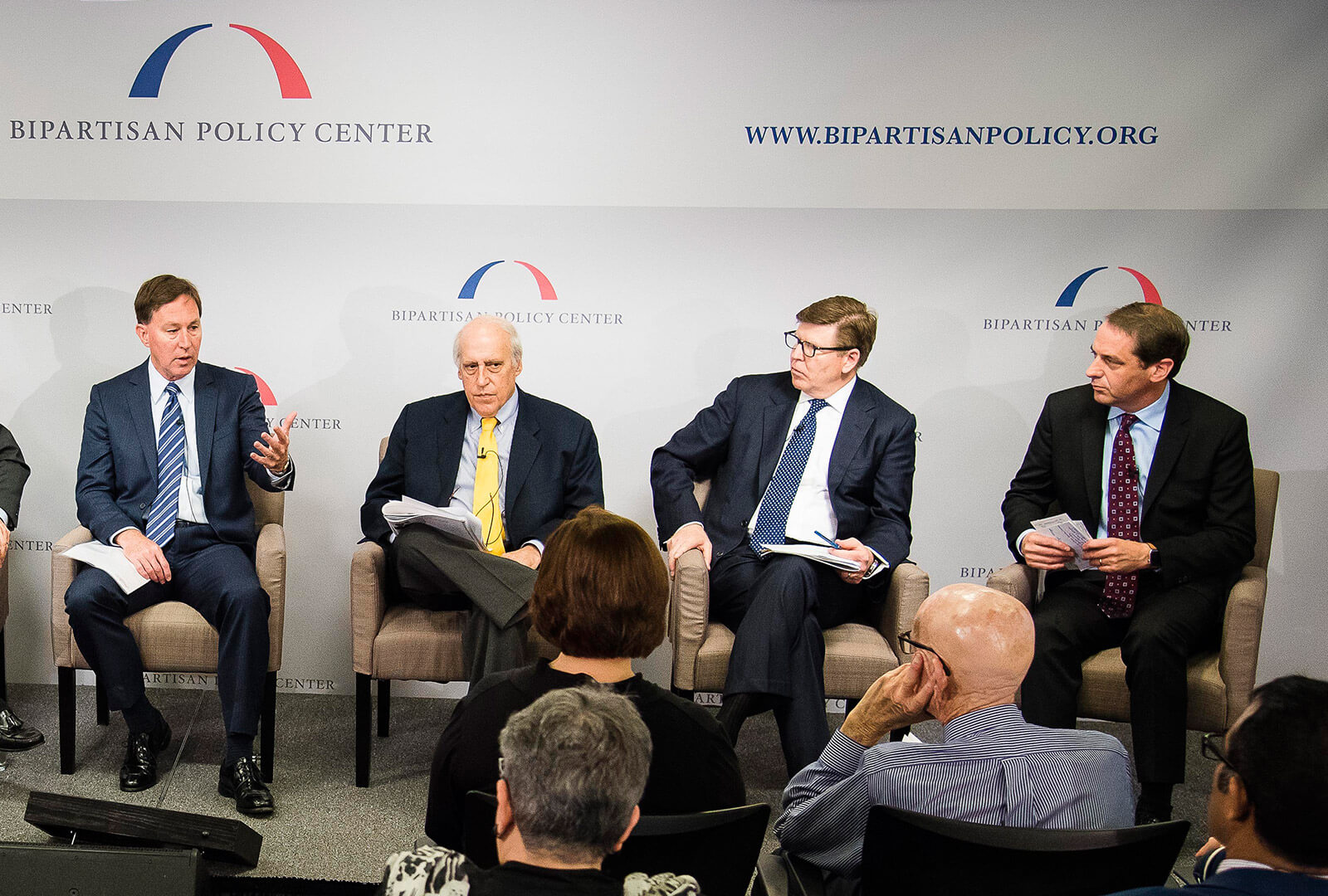
Looking into the future, the challenges our food system faces can seem overwhelming. By 2050, farmers will have to double food production to feed the world’s expected population of nearly 10 billion. As if that wasn’t enough of a challenge, farmers and the food industry as a whole will need to achieve this goal during a time of climate change, while decreasing their impact on the environment in order to ensure that future generations will be able to thrive.
The CEO Council on Sustainability and Innovation was founded to face these challenges. Currently composed of leaders at Hormel Foods, DuPont, Kellogg, Land O’Lakes and Elanco, the council was established with the idea that sharing innovations and best practices will deliver the greatest impact.
Given the challenge at hand, the enthusiasm and optimism on display at a recent panel of the council’s CEOs might surprise some. However, the message was clear: at every stage of the supply chain—from the way farmers produce food to the way consumers can reduce food waste—there is potential for massive improvement.
“As leading organizations in the food and agriculture sector, we understand that our collective efforts are needed to address the increasing threats to food security,” said Jeff Ettinger, chairman of the board and CEO of Hormel Foods. “By working together, we can accomplish more than any of us can on our own.”

Jeff Ettinger, chairman of the board at Hormel Foods, and Dan Glickman, panel moderator
During the panel discussion, Chris Policinski, CEO and president of Land O’ Lakes, pointed out that farmers have a proven history of dramatically improving output with each generation. “Farmers are the original entrepreneurs,” he said. “They are wonderful at adopting safe, proven technology.” In just the last 40 years, he said, corn farmers have increased yield six fold while using 13 percent fewer acres, so the idea that farmers will be able to hold up their end of the bargain isn’t just wishful thinking.
Together, coming advances in biotech, animal health and husbandry, new methods to make arid lands productive and the coming revolution using “big data” and machine learning, suggest that similar gains in the coming decades are achievable.
But can that increase in productivity be achieved without long-lasting damage to the environment?
John Bryant, chairman and CEO of Kellogg Company, noted that a rising number of consumers have become deeply interested in knowing where their food is coming from and what impact food production is having on the environment.
“It’s a great opportunity for us to engage with consumers even more,” he said. “We actually have a great story to tell.”
As leading organizations in the food and agriculture sector, we understand that our collective efforts are needed to address the increasing threats to food security. By working together, we can accomplish more than any of us can on our own.
Jeff Ettinger, chairman of the board at Hormel Foods
That story boils down to this: increased productivity and environmental sustainability are not opposing forces but two sides of the same coin. From the public’s perspective, achieving sustainability requires producing food using less fuel and water and using land without decreasing its future viability. Farmers—for financial reasons and more—are motivated by exactly the same goals.
“There’s been a loss of understanding that farmers do care deeply about sustainability,” Bryant said. “We need to find new ways to talk to consumers. What a great time to be a food company.”
Educating consumers that farmers and all players in the supply chain are committed simultaneously to increased production and sustainability will require companies to adopt a greater level of transparency.
“We shouldn’t resist the fact the fact that consumers want to know where their food comes from,” Policinski said. “We ought to celebrate it. It’s a fantastic opportunity to engage them.”
But, it’s a challenge on several levels. Companies must increase productivity and sustainability while becoming better at informing and educating consumers – and including them in the effort. “We have to keep raising the bar on ourselves in terms of what we do,” said Jeff Simmons, president of Elanco. “And then we have to raise the bar on how we communicate what we do.”
The stakes couldn’t be higher, and they go beyond the necessity to produce sustenance for billions of humans into the future.
“Having enough food to eat is a basic human right,” Policinski said. “Food security also creates economic security which goes to political stability. Food security is vital for having a stable world for us all to live in. We have a grand challenge and we have to get this right.”
More Stories About OUR FOOD JOURNEY™
This article was featured in Issue II of Inside Hormel Foods magazine. Click here to explore these unique collections of thought-provoking and heartwarming stories, recipes and features on our employees and the different areas of our company, all packaged up in a beautifully designed digital viewer for you.